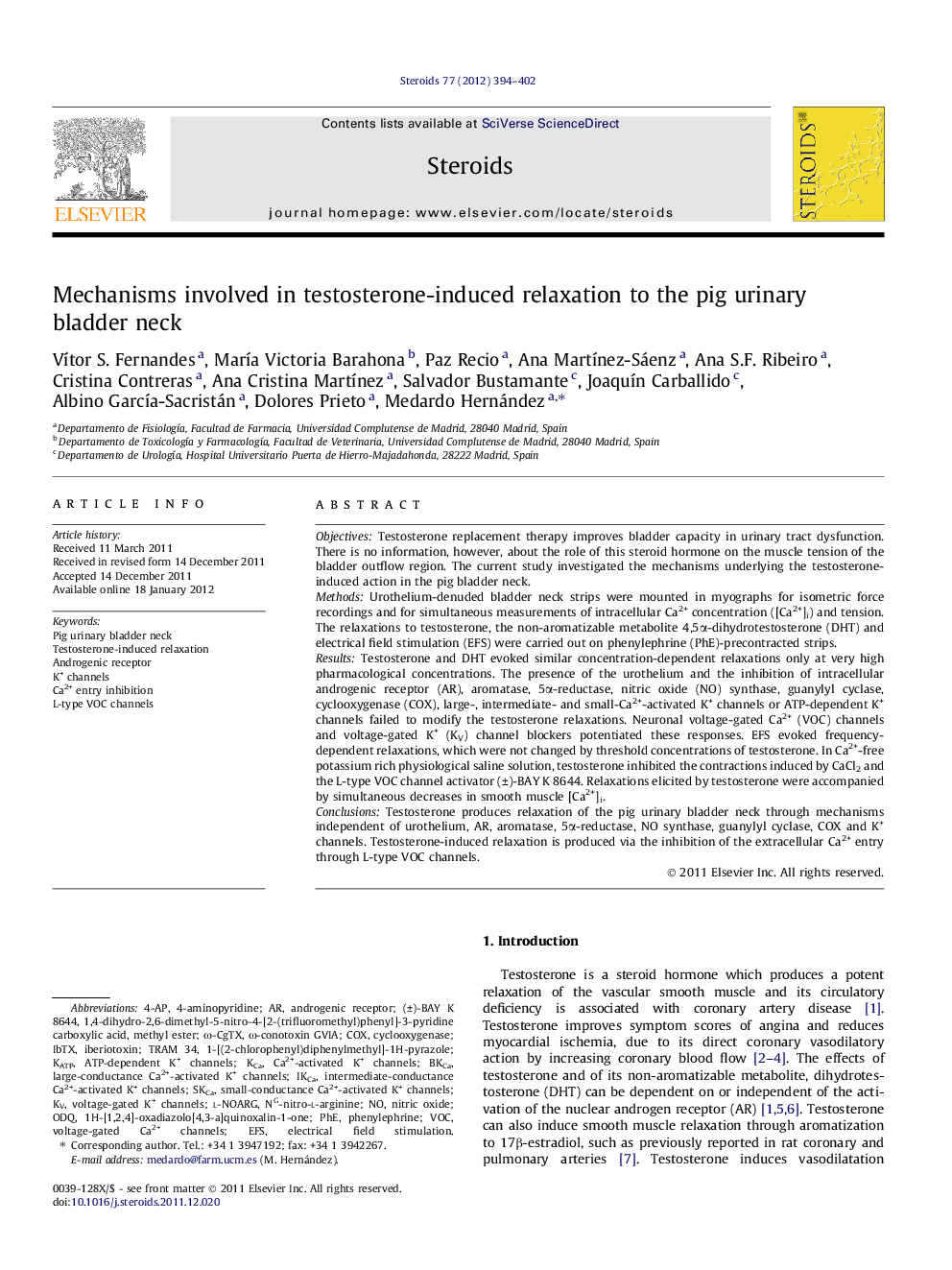| کد مقاله | کد نشریه | سال انتشار | مقاله انگلیسی | نسخه تمام متن |
|---|---|---|---|---|
| 2027986 | 1070387 | 2012 | 9 صفحه PDF | دانلود رایگان |

ObjectivesTestosterone replacement therapy improves bladder capacity in urinary tract dysfunction. There is no information, however, about the role of this steroid hormone on the muscle tension of the bladder outflow region. The current study investigated the mechanisms underlying the testosterone-induced action in the pig bladder neck.MethodsUrothelium-denuded bladder neck strips were mounted in myographs for isometric force recordings and for simultaneous measurements of intracellular Ca2+ concentration ([Ca2+]i) and tension. The relaxations to testosterone, the non-aromatizable metabolite 4,5α-dihydrotestosterone (DHT) and electrical field stimulation (EFS) were carried out on phenylephrine (PhE)-precontracted strips.ResultsTestosterone and DHT evoked similar concentration-dependent relaxations only at very high pharmacological concentrations. The presence of the urothelium and the inhibition of intracellular androgenic receptor (AR), aromatase, 5α-reductase, nitric oxide (NO) synthase, guanylyl cyclase, cyclooxygenase (COX), large-, intermediate- and small-Ca2+-activated K+ channels or ATP-dependent K+ channels failed to modify the testosterone relaxations. Neuronal voltage-gated Ca2+ (VOC) channels and voltage-gated K+ (KV) channel blockers potentiated these responses. EFS evoked frequency-dependent relaxations, which were not changed by threshold concentrations of testosterone. In Ca2+-free potassium rich physiological saline solution, testosterone inhibited the contractions induced by CaCl2 and the L-type VOC channel activator (±)-BAY K 8644. Relaxations elicited by testosterone were accompanied by simultaneous decreases in smooth muscle [Ca2+]i.ConclusionsTestosterone produces relaxation of the pig urinary bladder neck through mechanisms independent of urothelium, AR, aromatase, 5α-reductase, NO synthase, guanylyl cyclase, COX and K+ channels. Testosterone-induced relaxation is produced via the inhibition of the extracellular Ca2+ entry through L-type VOC channels.
► The current study was designed to investigate the mechanisms underlying the testosterone-induced action in the pig bladder neck.
► The existence of an open bladder neck strongly correlates with the presence of urinary stress incontinence due to intrinsic sphincteric deficiency.
► Our results show that testosterone produces relaxation of pig urinary bladder neck through mechanisms independent of urothelium, androgenic receptor, aromatase, 5α-reductase, NO synthase, guanylyl cyclase, COX or K+ channels.
► Testosterone-induced relaxation is produced via the inhibition of the extracellular Ca2+ entry through L-type VOC channels.
Journal: Steroids - Volume 77, Issue 5, April 2012, Pages 394–402